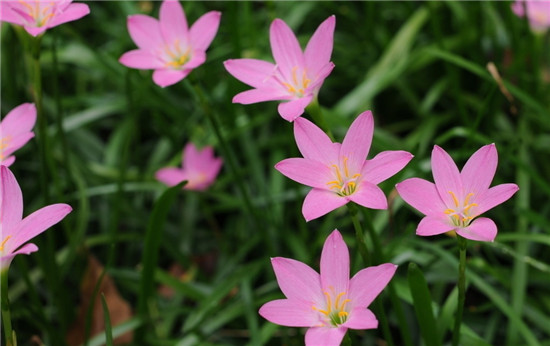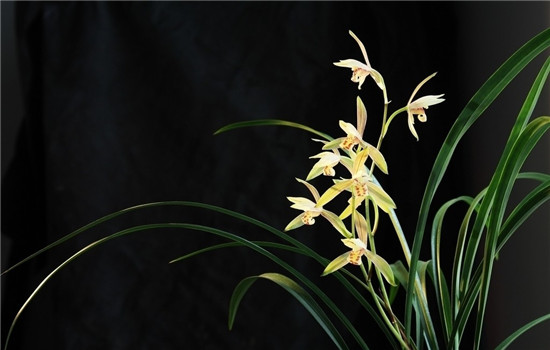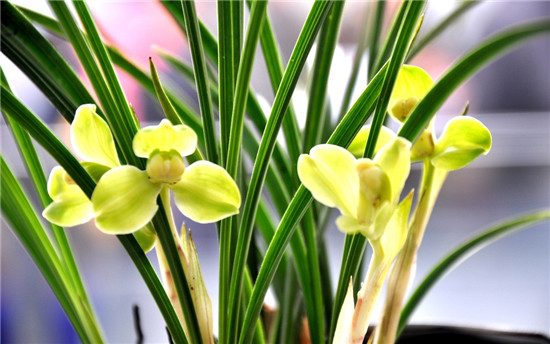How to deal with the yellowing of orchid leaves?
Friends who often grow orchids should know that there is bound to be something about the yellowing of orchid leaves. Next let's take a look at the solution to the yellowing of orchid leaves.

The reason for the yellowing of orchid leaves
The main results are as follows: 1. Due to the sudden change of the conservation environment of orchids, the leaves do not absorb water well, resulting in the phenomenon of yellow leaves.
2. Potted orchids bought directly are newly potted by merchants, and orchids do not adapt to the soil, which temporarily affects nutrient absorption and leads to yellow leaves.
3. Water yellow, that is, too much water causes the soil to accumulate water for a long time, poor air permeability and even some fibrous roots rot, showing that the tender leaves are dark yellow and dull, and the new shoots shrink.
4. Fat yellow, that is, fat, showing that the tip of the old leaf turns yellow and falls off, and the new leaf is thick and shiny, but it is generally concave and convex. If it is a precious flower, you can sprinkle a layer of pakchoi or radish seeds and pull it out a few days after emergence to consume nutrients.

5. Dry yellow, due to lack of water or dehydration for a long time, although the new leaf color is normal, but the lower leaves gradually dry yellow shedding aging.
6. Yellow, especially some flowers in the south like acidic soil, while the water quality in the north shows that the leaves gradually fade, turn yellow or even fall off.
7. If the leaves of orchids turn yellow and grow normally, it may be caused by excessive light.
8. The leaves of orchids turn yellow and the new buds are small, which is due to excessive light, lack of nitrogen fertilizer and necessary humidity.
9. Yellowing and shedding of old leaves, which is caused by normal aging or turning over the basin.
10. the old leaves yellowed and fell off quickly, watered too often, and planted improperly.
11. In addition, flower friends can check whether the rotten roots of orchids are rotten or whether the plants are not clean. If the rotten roots are disinfected as soon as possible, they can be maintained in dry ventilation.

How to maintain orchids
Orchids are indeed more difficult to grow than other flowers. The difficulty lies in the fact that the roots of orchids are sensitive to water and are easy to "drown" or "die of thirst". When the plant is too wet or dry for more time than Langen can bear (to be exact, the hypoxia or lack of water in the plant lasts longer than Langen can bear), it will cause rotten or empty roots; for longer, the root problems will be reflected in the leaves, and the plant will eventually turn yellow and die.
Because the false bulb of the orchid itself contains water, and whether the root of the orchid is rotten or empty, the residual part of the orchid still has a trace of water absorption function, so even if there is something wrong with the root of the orchid, it can still linger for a period of time. It is not easy to find problems from the aboveground part of the plant.
In fact, orchids are more likely to be "drowned", that is, due to improper selection of plant materials, water retention is too strong or watering too frequently, resulting in plants always wet. When this excessive wet state lasts longer than the orchid can bear, the orchid root will rot and the orchid plant will eventually die. In addition, some people have heard that orchids are "afraid" of water, so they seldom water them. As a result, orchids are "thirsty to death". This is also the case. Thus it can be seen that whether to control the water content in the plant material is the key to determine the success or failure of orchid cultivation.

Why can't orchids be raised in ordinary soil?
Let's first analyze the changes in the dry and wet state of the soil after watering: "wet" → "wet", "→" moist "→" and "→" dry. Among them, "wet", "wet" or "dry" or "dry" are not conducive to the growth of orchid root, only "run" is the most suitable for orchid growth. Ordinary soil continues to be "wet" or "wet" for too long after watering, which exceeds the time that orchids can bear, so tragedies occur naturally, so ordinary soil is not suitable for orchid cultivation.
Thus it can be seen that the fundamental goal of orchid cultivation is to shorten the time when the plant is in the "wet" and "dry" state and prolong the time in the "moist" state. No matter the selection of plant materials, the selection of orchid pots (the size and texture of orchid pots also have a great influence on the change of water content of plants), or watering, they are all carried out around this goal.
It can also be seen from here that the water retention or hydrophobic characteristics of the plant determine the change of the water content of the plant to a great extent, and even determine the success or failure of orchid cultivation. It can be said that watering is the external factor that determines the change of plant water content, while plant material is the internal cause that determines the change of plant water content. In order to control the water content of the plant material, the prerequisite is that the plant material must be selected.
The above is the whole content of how to deal with the yellowing of orchid leaves for you. I hope this article can help you. Please continue to follow us.
The prerequisite is that the planting material must be selected.
The above is the whole content of how to deal with the yellowing of orchid leaves for you. I hope this article can help you. Please continue to follow us.
Related
- Wuhan Hospital Iron Tree Blooming Result Was Instantly Frightened by the Gardener Master
- Which variety of camellia is the most fragrant and best? Which one do you like best?
- What is the small blue coat, the breeding methods and matters needing attention of the succulent plant
- Dormancy time and maintenance management of succulent plants during dormancy
- Minas succulent how to raise, Minas succulent plant pictures
- What are the varieties of winter succulent plants
- How to raise succulent plants in twelve rolls? let's take a look at some experience of breeding twelve rolls.
- Attention should be paid to water control for succulent plants during dormant period (winter and summer)
- Watering experience of twelve rolls of succulent plants
- Techniques for fertilizing succulent plants. An article will let you know how to fertilize succulent plants.



